Islamic Textiles in the Brooklyn Museum
| Tiraz Textile Fragment with Inscriptions with Name of Caliph al-Muti' The large, woven inscription in black on this undyed plain linen textile includes part of the Muslim profession of faith: “In the name of God, the Merciful, the Compassionate.” The strikingly bold, unadorned Kufic script of this fragment is characteristic of the pre-Fatimid period in Egypt during the second half of the tenth century and contains the name of the cAbbasid caliph al-Muti‘, who ruled from 946 to 974.
|
 | Egypto-Arabic Textile, Turban Fragment
|
 | Egypto-Arabic Textile, Band
|
 | Egypto-Arabic Textile, Scarf or Turban Fragment
|
 | Tiraz Textile Fragment Inscribed with the Name of Caliph al-Muti`
|
 | Tiraz Textile Fragment
|
 | Egypto-Arabic Textile, Band
|
 | Textile Fragment with Figural and Floral Motifs and Inscriptions Coptic and Arabic influences meld in this early Islamic textile fragment to create a fascinating hybrid of Coptic-style human and animal figures in the main band of decoration, and a curious Arabic Kufic inscription that has been transformed into an illegible series of decorative geometric motifs along the upper register. Early Egyptian Islamic textiles such as this one were probably still woven by Coptic weavers, as suggested by the coarse, dark wool foundation and by the way the tapestry-woven Coptic-style decoration in wool and linen is paired with an illegible Kufic script band.
|
 | Textile Fragment
|
 | Textile Fragment
|
 | Textile
|
 | Bird in a Medallion The graceful bird in this textile medallion is reminiscent of Late Antique and Coptic motifs, yet the textile’s color scheme suggests early Islamic manufacture in Egypt under the Tulunids (circa 868–905).
|
 | Textile Fragment Depicting a Speckled Deer A speckled deer or gazelle nibbles on leaves under a canopy of large fronds in this textile fragment. The fine weave and relatively light weight of the piece suggest it was part of a domestic textile, perhaps a coverlet.
|
 | Egypto-Arabic Textile Fragment found in Egypt
|
 | Textile Fragment: A Hare This medallion contains a hare ready to leap from the wide tan leaves that surround it. The technical and stylistic traits of this fragment—including tapestry-weave technique and the medallion motif—relate it especially to Coptic textiles. The palette of olive green, brown, and blue on undyed linen, however, suggests Islamic origin. The fragment’s large size and weight indicate it was a wall or floor covering.
|
 | Tiraz Textile Fragment Leaping hares in twelve roundels make up the red-ground tapestry band of this fragment. Hares were associated with speed, the hunt, and good fortune in ancient Egyptian, Mesopotamian, Greek, and Roman art. This popular motif of the Fatimid period in Egypt appears in a variety of artistic media including ceramics, wood, metalwork, and textiles.
|
 | Egypto-Arabic Textile
|
 | Egypto-Arabic Textile
|
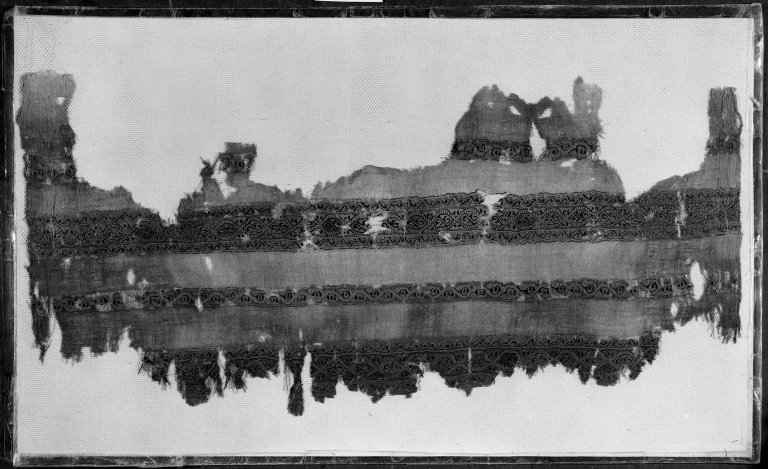 | Egypto-Arabic Textile, end of scarf or turban
|
 | Textile Fragment
|
 | Textile Fragment Later Fatimid tiraz textiles demonstrate a revival of Late Antique and Coptic motifs, including the hares and back-to-back birds inhabiting the central medallions of this textile fragment. Depictions of animals and birds, combined with lavish banded ornamentation of colorful, stylized motifs, overtook the importance of historical inscriptions in later Fatimid textiles of the eleventh and twelfth centuries.
|
 | Tiraz Textile Fragment
|
 | Tiraz Textile Fragment
|
 | Tiraz Fragment of Caliph Marwan II From the earliest period after the emergence of Islam, textiles were among the most economically and artistically significant material objects. One important type of textile is known as tiraz, a word of Persian origin that means "embroidery" and which later referred to the workshops in which these cloths were made. Tiraz textiles were produced for the ruler to offer to favored individuals as honorary gifts, and often contain inscriptions that include the ruler's name and the date of manufacture.
|
 | Fostat Textile Fragment
|
 | Egypto-Arabic Textile, Braid
|
 | Egypto-Arabic Textile, Carpet Fragment
|
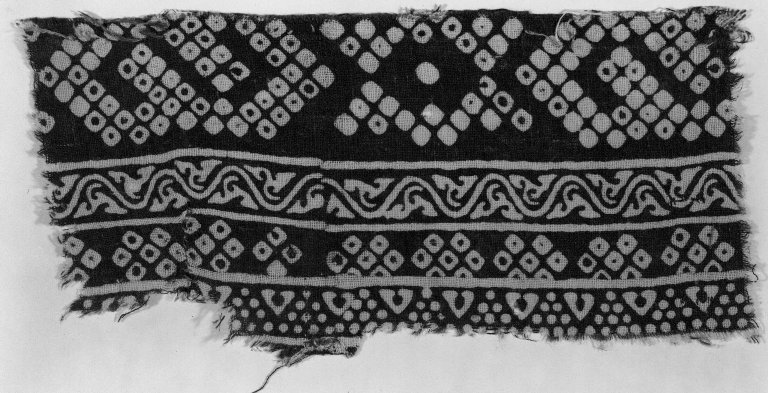 | Egypto-Arabic Textile, Fostat Fragment found in Egypt
|
 | Egypto-Arabic Textile, Fostat Print found in Egypt
|
 | Egypto-Arabic Textile found in Egypt
|
 | Egypto-Arabic Textile found in Egypt
|
 | Egypto-Arabic Textile, Fostate Print found in Egypt
|
 | Egypto-Arabic Textile, Fostate Print found in Egypt
|
 | Egypto-Arabic Textile, Hanging or Coverlet found in Egypt
|
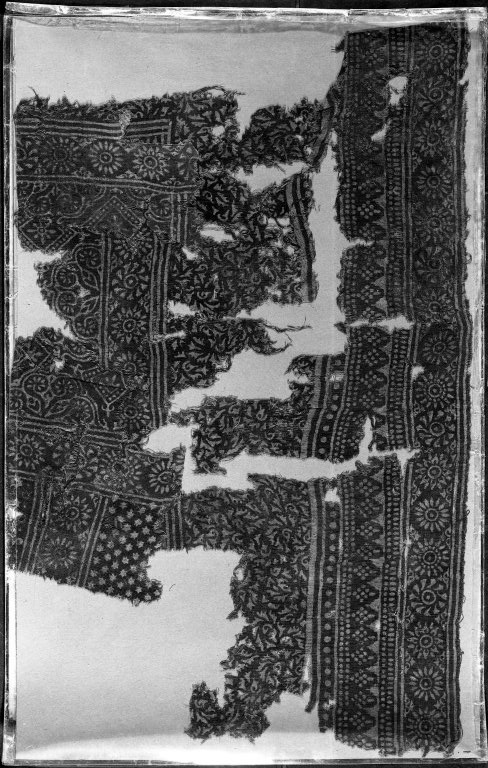 | Fostat Textile Fragment
|
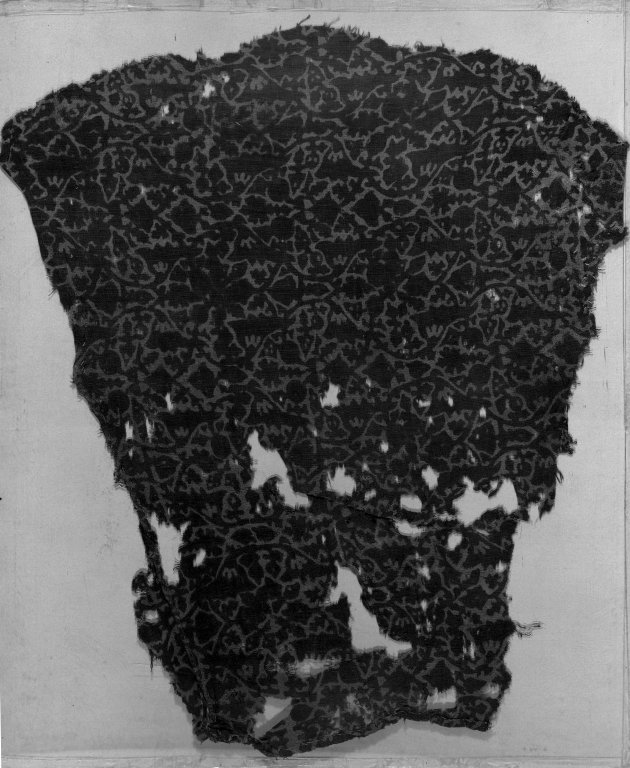 | Egypto-Arabic Textile, Fostat Fragment found in Egypt
|
 | Fragment of a Tunic
|
 | Textile Fragment with Vermiculated Pattern
|
 | Fostat Textile Fragment
|
 | Egypto-Arabic Textile, Fragment of Hanging? found in Egypt
|
 | Egypto-Arabic Textile found in Egypt
|
 | Woven Belts
|
 | Woven Belts
|
 | Woven Belts
|
 | Loom Width of Silk Fragment
|
 | extile Fragment with a Young Man Reading
|
 | Textile Fragment with Hunter on Horseback
|
 | Fragment of Brocade
|
 | Textile Fragment from a Garment with a Motif of Animals in Combat
|
 | Textile Fragment with Ship Pattern
|
 | Sash or Belt
|
 | Two pieces of Brocade
|
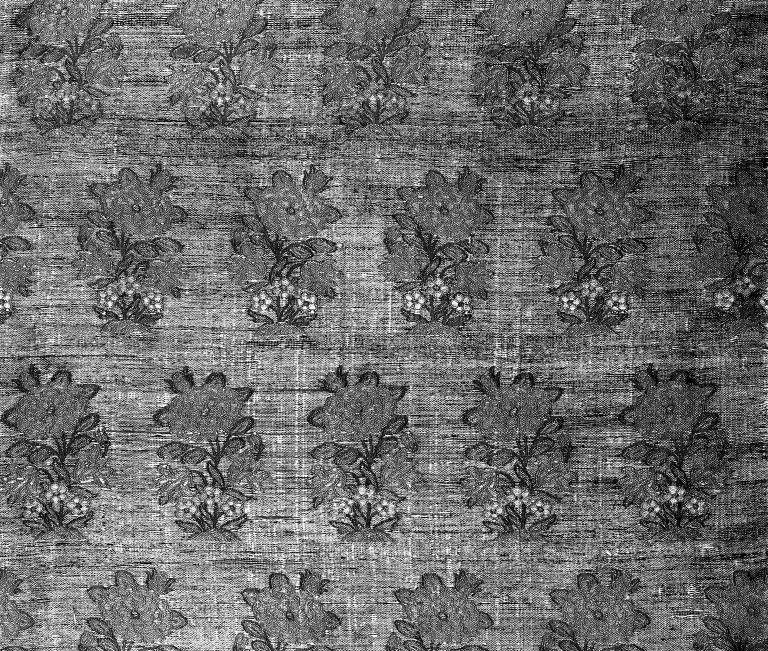 | Square Textile
|
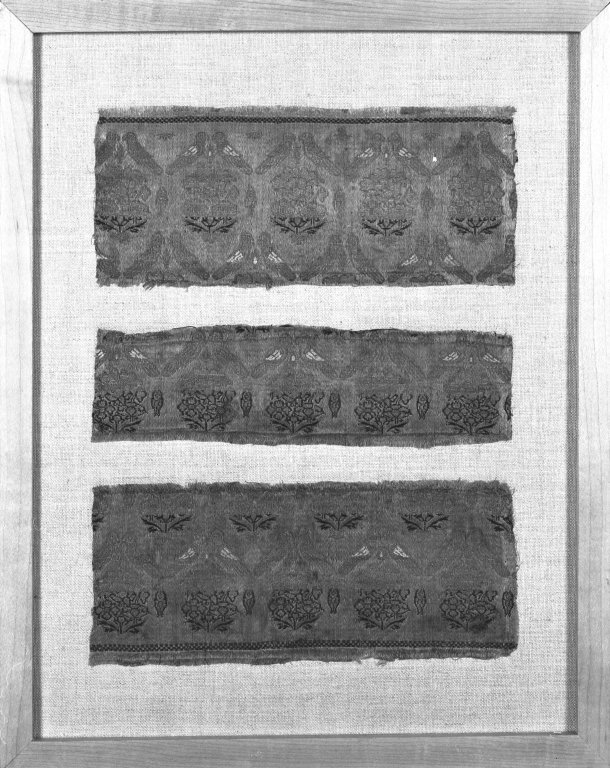 | Brocade Panel
|
 | Large Textile
|
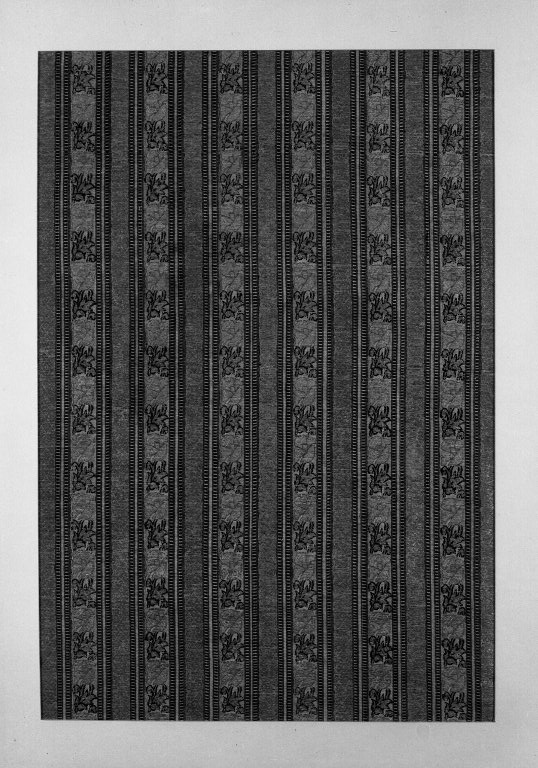 | Textile
|
 | Tomb Cover with Arabic Inscription
|
 | Textile Fragment of Hunting Scene
|
 | Brocade Square
|
 | Brocade Panel
|
 | Textile Fragment with Pattern of Hunters and Falcons
|
 | Material from the Cuffs of Women's Pantalettes
|
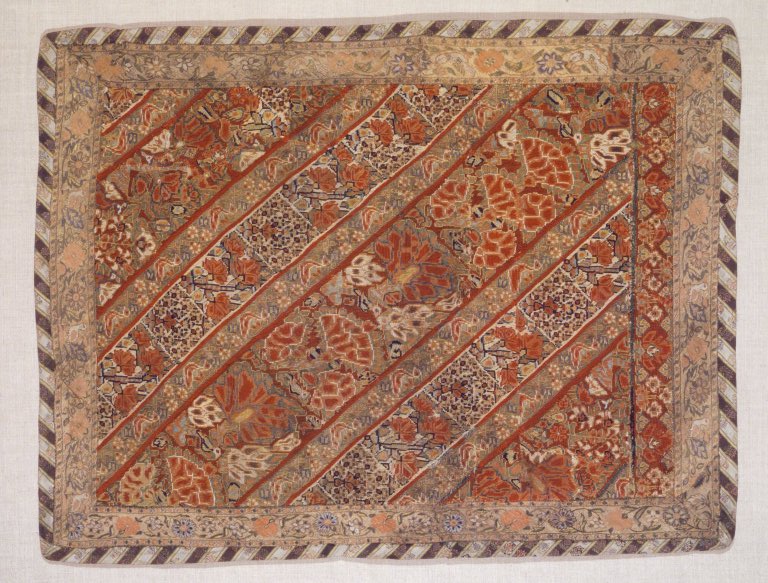 | Textile Fragment of a Women's Trouser (Naqsh)
|
 | Small Panel
|
 | Pair of Man's Gloves
|
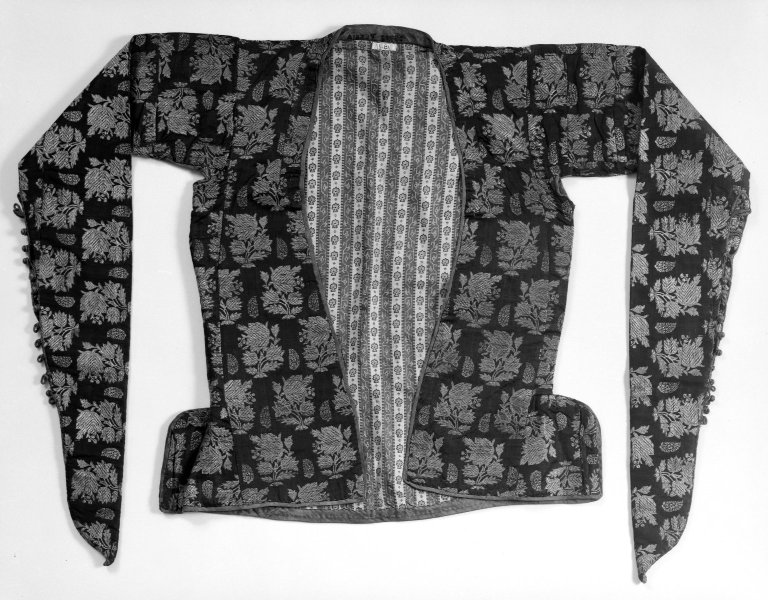 | Woman's Short Jacket
|
 | Woman's Short Jacket
|
 | Coat
|
 | Prayer Mat
|
 | Crimson Panel
|
 | Long Open Jacket
|
 | Cover, red with embroidery, fringed
|
 | Large Rectangular Cushion Cover
|
 | Textile with Stylized Embroidered Pattern
|
 | Rectangular Panel
|
 | Wall Hanging
|
 | Textile Fragments with Çintamani Pattern
|
 | Velvet Panel In the fifteenth century, the Ottoman textile industry established itself in the province of Bursa (southeast of Istanbul), which became known as both a major manufacturing center and a depot of silk cocoons imported from Iran. Pieces like this velvet panel were used to decorate walls or were cut to form clothes or domestic funishings for the upper classes. Flowers, particulary carnations and tulips, were recurring motifs that were very popular in Ottoman textile design. With their bold simplicity and often crimson grounds, Ottoman textiles are suggestive of supreme confidence ahd power. The vigilant care of these treasured panels by the court and the elite has ensured their preservation over the centuries.
|
 | extile Panel with Carnation Pattern
|
 | Textile
|
 | Cushion Cover
|
 | Embroidered Cover
|
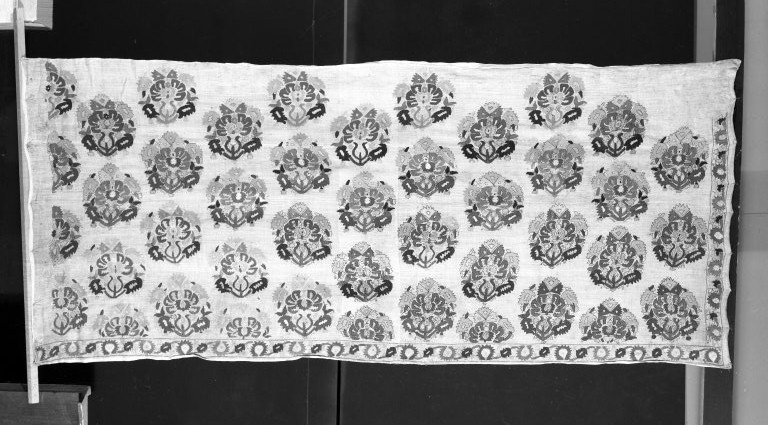 | Embroidery
|
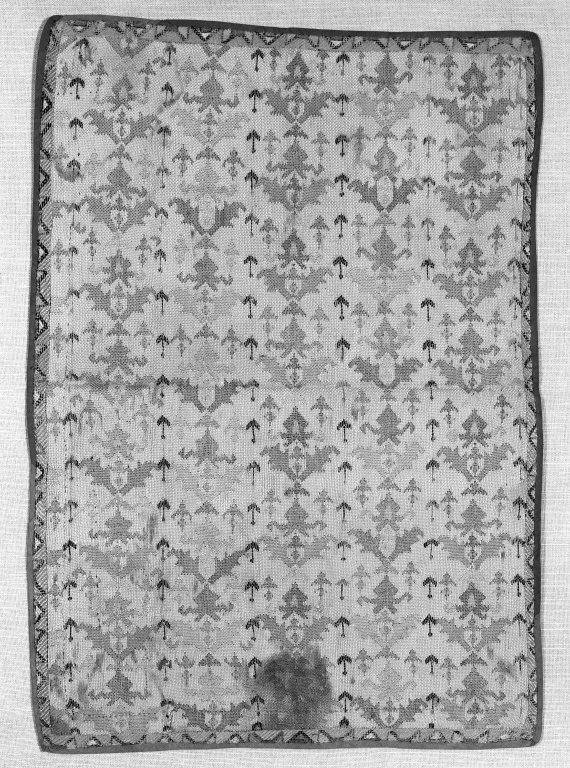 | Textile
|
 | Textile
|
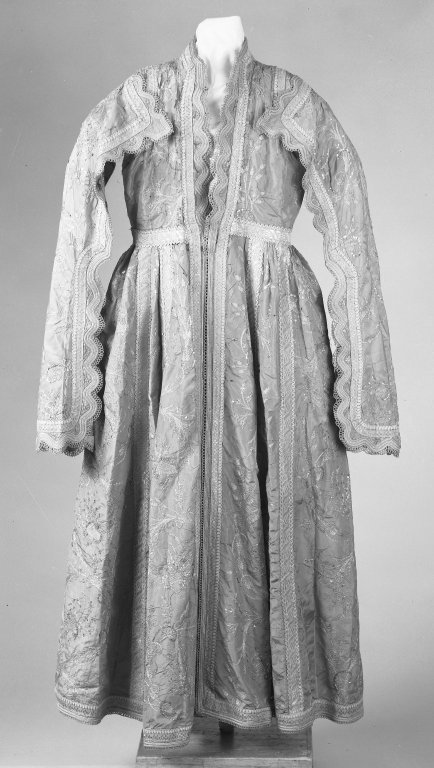 | Woman's Robe
|
| | |
 | Cushion Cover
|
 | Pair of Boots
|
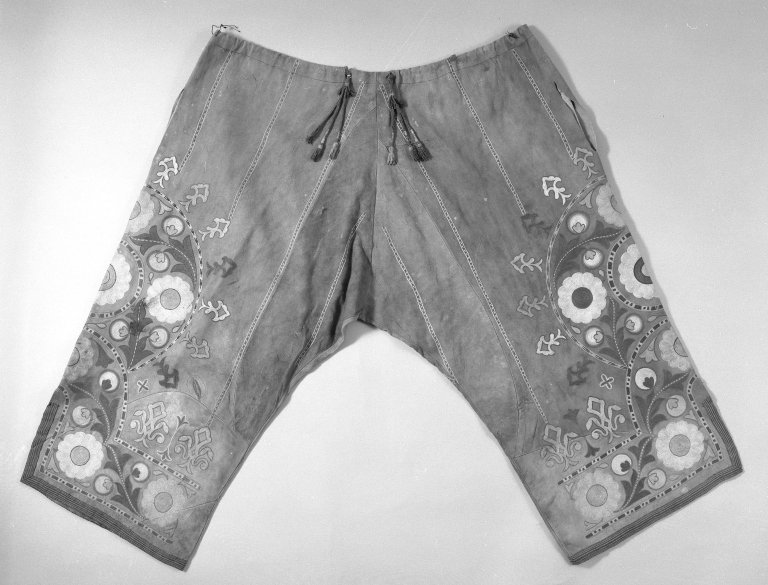 | Trousers
|
 | Trousers, embroidered
|
 | Red trousers, colorful chain stitch embroidery
|
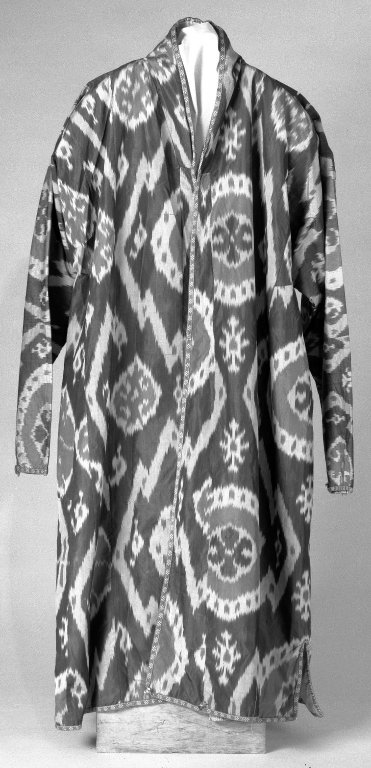 | Robe
|
 | Man's Robe
|
 | Textile fragment, border originally part of niche design.
|
 | Prayer Hanging
|
 | Prayer Hanging
|
return to rugrabbit's profile to view additional compilations and exhibitions... http://rugrabbit.com/profile/439
- Home
- Antique Rugs by Region
- Category
- Profiles
- Post Items Free
- Albums
- Benaki Museum of Islamic Art
- Budapest: Ottoman Carpets
- Gulbenkian Museum
- Islamic Carpets. Brooklyn
- Islamic Textiles. Brooklyn
- Konya Museum: Rugs
- MKG, Hamburg
- MMA: Caucasian Carpets
- MMA: Mamluk Carpets
- MMA: Mughal Indian Carpets
- MMA: Ottoman Carpets
- MMA: Safavid Persian Carpets
- MMA: Turkmen Rugs
- McCoy Jones Kilims
- Ottoman textiles. Met
- Philadelphia Museum
- Rugs and Carpets: Berlin
- Seljuqs at the Met
- TIEM, Istanbul: Carpets
- V&A: Classical Carpets
- Vakiflar Carpets: Istanbul
- Baluch Rugs: Indianapolis
- Gallery Exhibitions
- Jaf an Exhibition
- Alberto Levi Gallery
- Andean Textile
- Christie's London: 2016
- Francesca Galloway
- HALI at 40
- ICOC Washington, DC 2018
- Jajims of the Shahsavan
- London Islamic Week April, 2018
- Mongolian Felts
- Navajo Rugs: JB Moore
- Persian Piled Weavings
- SF Tribal & Textile Art Show 2020
- SF Tribal 2019
- Sotheby's: C. Alexander
- Turkish Prayer Rugs
- Turkmen Main Carpets ICOC 2007







